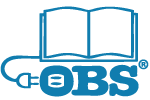Anne C. Wyman, once the Boston Globe’s first full-time travel writer and long-time editorial page editor, in 2010 asked OBS’s Protean Press to publish her book “Kiping’s Cat: A Memoir of my Father.” Over the years, this publishing project grew into four Wyman books, two of them posthumous publications by Anne’s father himself, Jeffries Wyman.
A Harvard scientist and co-discoverer of a branch of science (allostery) based on horseshoe crab blood, Jeffries Wyman proved as elusive in life as he was brilliant. When his wife died and left him with two young children to care for, Anne and her brother Jeff, Jeffries Wyman moved to Japan and indulged in epistolary parenting from afar, writing letters to his children about the secluded life on an island remote to most Westerners (“Letters from Japan”). Then, just as spontaneously, he moved to Alaska to live among the inland Inupiat at Anaktuvuk Pass, again living remotely from Western civilization, as the natives had done for thousands of years before he arrived. His “Alaska Journal” chronicles this time with his paintings, which have recently been republished in the October 2019 “Alaska Magazine” by Michael Engelhard.
In Kipling’s Cat, Anne captured her father, and in his Alaska Journal, Jeffries in turn captured and rendered in indelible watercolors an ecosphere and a whole way of life that the Trump administration has recently targeted for destruction. According to a 2019 press release from the Center for Biological Diversity:
“…The people of Nuiqsut are already feeling the growing impacts of the oil and gas activities that surround their community, and ConocoPhillips’ winter drilling plans will only compound these cumulative impacts. Before proceeding, BLM failed to do the required assessment of all these effects or to consider any options for reducing impacts.
“Caribou have always wintered around the northern coastal area,” said Itta. “They travel between here and the Anaktuvuk Pass. It used to be by the thousands and thousands. The infrastructure is changing their migration route, interrupting it.”
The exploratory drilling program is forcing hunters and trappers to travel further and making it more difficult to pass on traditional hunting practices to their children. As part of its massive oil program, ConocoPhillips is also operating gravel mines around Nuiqsut. “These industrial operations are resulting in constant blasting and truck traffic that disrupts our people’s lives and damages homes and sends harmful dust clouds tumbling into the area, all the way to our only drinking water resource,” said Itta…”
In the course of selling rights to Alaska Journal, OBS contacted the University of Alaska Press, which led to the University’s Museum of the North. Anne and Jeff Wyman later donated the entire collection of Jeffries Wyman’s watercolors of Anuktuvuk Pass to that Museum, so that, in addition to reading the books which chronicle their lives, today’s travelers may also see a vanishing world that the Wymans’ act of publishing made permanent.
